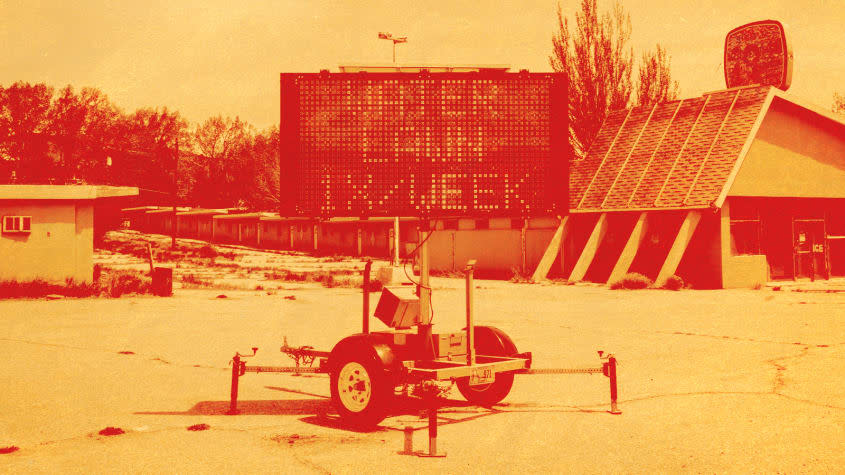America's latest drought is a sign of things to come

In May, precipitation was below average from California to Texas, and with summer temperatures on the rise, the western United States will continue to experience an extensive and intense drought. Here's everything you need to know:
What is a drought?
A drought is a prolonged period of time with less than normal precipitation. Over the course of weeks, months, or years, this can result in the water levels of reservoirs and lakes falling and the flow of streams and rivers declining.
Why is the drought so bad in the western United States?
Climate change is leading to higher temperatures, which causes the ground to dry out. "In the last 1,200 years, we haven't seen a period as dry as right now," Ann Willis, a researcher at the Center for Watershed Sciences at the University of California at Davis, told The Washington Post. "We're really hitting new lows in terms of how extreme the conditions are."
Roughly one-third of California's freshwater supply comes from the snowpack in the Sierra Nevada, which melts in the spring and enters rivers and reservoirs. It was a dry winter, however, and there weren't enough storms to generate the necessary snowpack; by April 1, the statewide snowpack was just 38 percent of its average for that time of year. Because of this, much of the runoff didn't even make it to the reservoirs and rivers, with the thirsty ground instead soaking up the water or the vapor going into the atmosphere.
New Mexico also had a dry winter — Albuquerque went for more than 70 days without any measurable rainfall — and by the end of spring, 90 percent of the state was in "extreme" or "exceptional" drought, KOAT reports. The lack of rainfall dried out piñon trees across the state, which were then unable to produce enough sap to ward off attacks from bark beetles. Over the spring, several wildfires, fueled by strong winds and dry conditions, swept through New Mexico, with those piñon trees acting as kindling.
What actions are being taken to lessen the effects of the drought?
In California, which this year experienced its driest January through May on record, the state is trying to cut water use by 35 percent. Several areas are under water restrictions — San Diego residents, for example, are only able to water their lawns three days a week, before 10 a.m. or after 6 p.m; not allowed to wash their cars at home; and banned from watering within 48 hours of rain. Most of San Diego County is under moderate drought conditions, while the majority of Los Angeles County is under at least severe drought conditions. In L.A., residents can only water their yards two days a week, with no watering allowed from 9 a.m. to 4 p.m. The Los Angeles Department of Water and Power said it will patrol the streets to "educate Angelenos on the days of the week watering restrictions and to enforce the ordinance."
The U.S. Small Business Administration also announced earlier this month that in several Utah counties, certain small businesses that have been affected by the drought can apply for low-interest economic injury disaster loans. Almost the entire state is in at least severe drought conditions, and the Utah Department of Natural Resources says its reservoirs are only about 63 percent full.
What else can be done?
Conserving water is a necessity, and there are steps everyone can take to make a difference. Go around your house, and take stock of changes that can be made — install low-flow toilets and showerheads, replace grass lawns with drought-resistant landscaping, and make sure to finally call the plumber about fixing that leaky faucet (that alone could cause 300 gallons of wasted water, every single month). Be sure to not let the water run while brushing your teeth, only turn on the dishwasher when it's full, and use a broom when cleaning sidewalks and driveways, not the hose.
Is this current, more extreme drought a sign of things to come?
Droughts are lasting longer now, and if drastic action isn't taken to curb climate change, scientists think they could get even worse. "There's no good news for the foreseeable future, for the next few decades," Willis told the Post. "Fundamentally addressing climate change is the ultimate answer. ... If we don't, then what we're really seeing is just preamble to an even more extreme and catastrophic set of conditions."
You may also like
People at Jan. 6 rally were 'well-behaved,' Trump tells Newsmax
Is America abandoning religion — or just remixing it?
Jan. 6 committee subpoenas never-before-seen documentary footage of Trump and his inner circle

